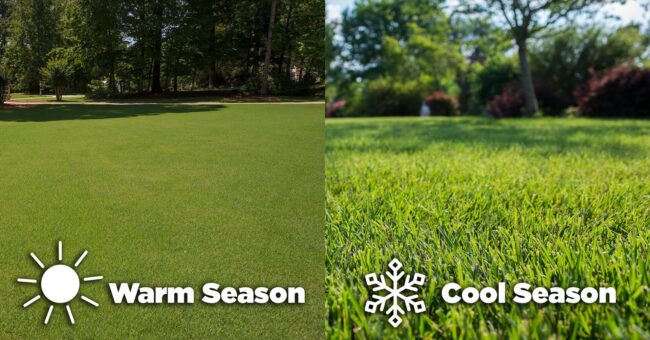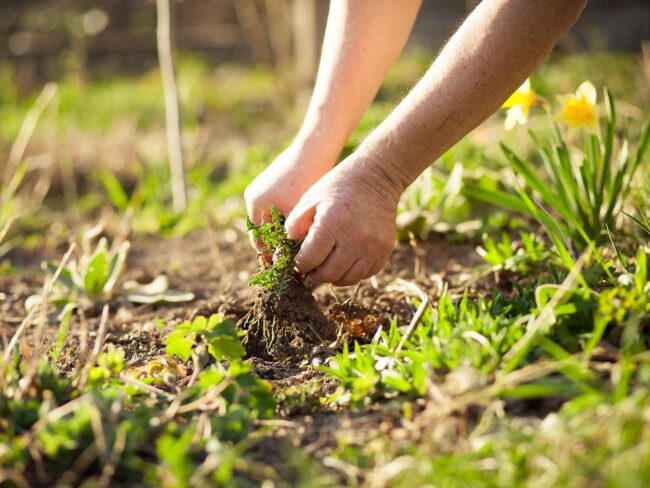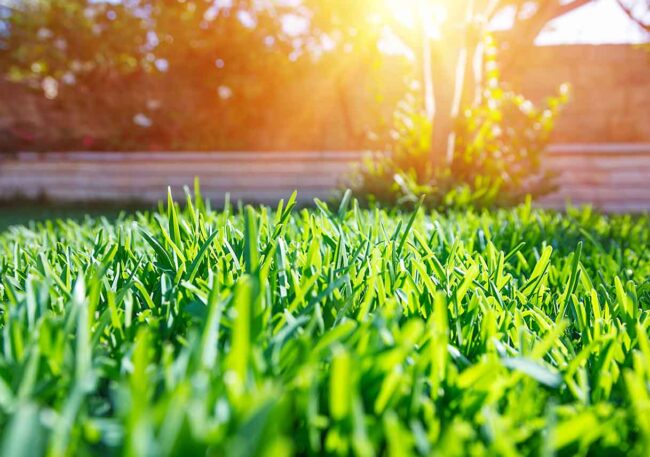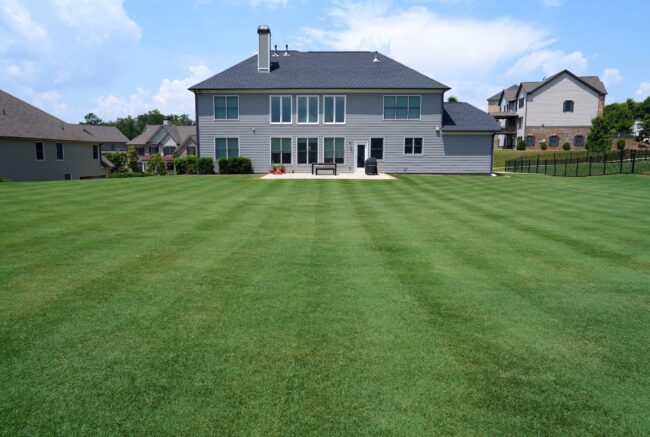Anyone who has a lawn to care for probably understands that there are lots of different types of grass. Grass normally falls into two classes, warm-season grass and cool-season grass.
They have different characteristics and grow at different rates.
Warm Season vs. Cool Season Grass

When you start thinking about killing weeds in the lawn, it’s important to know what type of grass you have and if it’s warm-season grass or cool-season grass. They both have their own care requirements, and using the wrong type of weed killer can be detrimental. Here’s what you need to know about warm-season grass and cool-season grass, as well as how weeds affect both types of lawns.
Warm-season grass normally begins active growth in late spring when the weather warms up. It typically needs a lot of sun and can be intolerant of shade. It goes dormant in the cooler months and may turn brown when dormant. Some of the most popular warm-season grasses include Centipede, Bermuda, Zoysia, and St. Augustine.
Cool-season grass greens up and begins active growth much earlier in the season when it’s still cool. With regular watering, cool season grass will continue active growth much later into the season. It can tolerate some shade, but if not watered properly, cool-season grass can go dormant in the heat of the summer. Popular cool-season grass includes Ryegrass, Bentgrass, and Fescues.
How Weeds Affect the Grass
Killing weeds in the lawn may seem like a never-ending battle, but it doesn’t always have to be that way. Just like grass, different varieties of weeds may thrive better in warmer or cooler weather. Weeds may die off or go dormant, just like grass, when the weather is not favorable for growth.
However, when it is favorable, weeds compete with grass for air, water, and other vital nutrients, eventually weakening lawns. Without vital nutrients, weakened grass is susceptible to disease, drought, and infestation. They also tend to grow and spread quickly, choking out healthy grass and eventually taking over lawns.
They come in many different forms and can be difficult to eradicate without the proper tools. Killing weeds in the lawn involves eradication as well as buying enough time to grow strong, healthy grass. Strong healthy lawns can resist weeds with the right products and maintenance.
Negative Effect of Weeds

Weeds compete with your grass for food and space, both of which are vital to a healthy lawn. They eat up valuable resources your grass needs to grow. Certain types of weeds can also act like parasites. Instead of just competing for valuable resources, these weeds can actually take over roots in the grass and weaken the nutrient content of the soil.
Left unchecked, these weeds can weaken the soil to a detrimental point in addition to killing your beautiful grass. Other weeds can be harmful to pets and children. While the harmful effects of weeds vary, some can cause allergies, rashes, blisters, and more. Others can be poisonous or lethal to certain animals or livestock.
Lastly, they can also cause fungal infections that can be disastrous for your lawn. Many times, by the time you recognize the fungal disease in your lawn, the damage is extensive and costly. Aside from just fungal diseases, weeds can usher in pest infestations. There are damaging nuisance pests that thrive particularly on and in weeds. When your lawn is overrun with weeds, it is the perfect breeding ground for fungal and pest infestations that can be detrimental to your lawn.
Killing Weeds on the Lawn
It starts with understanding what type of grass you have and getting professional products to help eradicate them, whether they’re chemical products or electrical products such as this Worx weed eater. You must know whether you need products for warm season or cool season weeds and the best time to apply these products. Application strategies may also involve deciding on a liquid or granular product and using marker dyes to promote even application.
While pulling weeds up by the roots is always ideal, it often is not practical. Lager lawns or lawns overrun with weeds require a different approach. It takes professional high-quality herbicides and surfactants to help eradicate weeds and prevent seedlings. Products that simultaneously strengthen lawns can be very beneficial and are often recommended. Once they are successfully eradicated, the right bio-stimulants and fertilizers can help maintain healthy lawns while keeping grass healthy and strong.
Keeping Your Lawn Beautiful

Keeping your lawn healthy and beautiful requires maintenance and tenacity, as well as the right type of products. It’s important to know what type of grass you have and its preferred growing season so you can choose the most effective products. Remember, killing weeds in the lawn is about more than just eradication. While eradication is important, you also want to buy enough time for your lawn to grow strong and healthy so it can’t be taken over by weeds.
They are terrible for your lawn. It may start out with just a few, but if left unchecked, they can quickly spread hazardous diseases and take over your lawn. Weeds can cause drought, usher in pests, and spread fungal infections while weakening soil. They can be hazardous to your health, children, and pets, and some weeds are lethal to livestock. Not only do weeds damage the health of your lawn, but they can also cause extreme allergies while killing your grass.
Golf Course Beautiful Lawn

Fortunately, it is possible to control and even eradicate weeds in your lawn. With the right knowledge and professional products, it is possible to have a golf course-style lawn that will be the envy of your neighborhood. First, you must eradicate weeds while feeding grass and strengthening the vitamin content of your soil. You want strong, healthy grass growing in nutrient-dense soil that hasn’t been weakened by weeds or fungal infections. Once your grass is strong and healthy and you have a beautiful-looking lawn, the right products can help you maintain your results.
